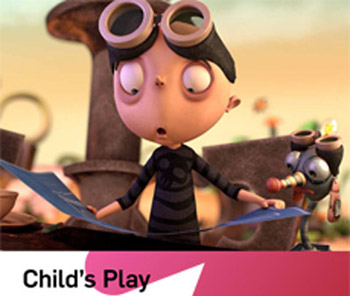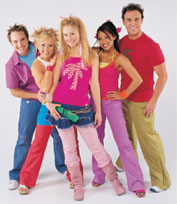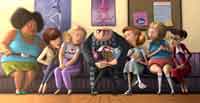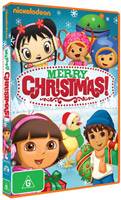Guess what? Kids Want To Watch Their Own TV Programs

Guess what? Kids Want To Watch Their Own TV Programs
Screen Australia has released new research looking at how children engage with screen content and the unique challenges involved in financing, producing and scheduling children's programs.
The report, Child's Play: Issues in Australian Children's Television 2013, reveals that children do prefer content that's made specifically for them. While children are commonly co-viewing general-audience programs with their families, they have a clear preference for children's programs when they have control of the remote. They also value Australian content, and are more highly engaged when they are watching drama programs over other types of programs.
Screen Australia's Chief Executive, Ruth Harley, said, 'This research clearly demonstrates that there's an appetite for quality children's television content. Programs made specifically for children are different from material produced for a family audience because they deal with stories and issues of interest to kids in appropriate ways. The delivery of quality Australian children's programming is essential to the cultural well-being of young Australians, so that they have the opportunity to see Australia's identity, character and cultural diversity reflected back to them."
Children surveyed for the research revealed that their favourite channels are the ABC's dedicated children's channels. Although the majority said it didn't matter to them where a TV show was made, almost all of those who did have a preference preferred Australian programs over foreign ones. Much like their older counterparts, most children want to watch good shows, regardless of the country of origin.
However, when children were asked to nominate their favourite shows, Australian titles featured prominently. Giggle and Hoot and Play School were way ahead of all other titles for 2–7 year-olds. Home & Away, Neighbours and Dance Academy were all in the top 10 favourite dramas for older children (with Home & Away at number two after Modern Family), and all of their top five favourite non-dramas were Australian, led by Australia's Funniest Home Videos, X-Factor and Good Game.
The report also reveals that broadcasters' programming strategies are being impacted in multiple ways in the evolving media environment, but scheduling continues to be key to the broadcast success of programs. Inconsistent scheduling has made it difficult for some programs to build loyal audiences.
Financing children's content is more difficult than ever in the new media landscape, the report shows. Children's programs attract lower broadcast licence fees than programs for adults, and finance is even tighter as audience fragmentation places pressure on advertising revenues. Australian children's programs also rely heavily on foreign finance, so the global financial crisis together with the strong Australian dollar have created extra challenges for the sector.
In response to Screen Australia's report, Child's Play: Issues in Australian Children's Television 2013, children's television industry leaders have met and agreed the following:
Australian children's television is important.
The research shows children want to watch quality content made specifically for them.
The sector is keen to work with government and the broadcasters to ensure more children's television success stories.
Dr Harley said, 'The Australian children's television sector is highly regarded both domestically and internationally, with programs such as Dance Academy broadcast all over the world in over 180 territories and Lockie Leonard and Mortified broadcast in Asia, Europe and South America among other countries."
'What this research tells us is that in order to be able to continue to deliver high-quality Australian children's content, we need to promote -buy in' from broadcasters to best deliver content to Australian child audiences in the new fragmented media environment," said Dr Harley.
Child's Play: Issues in Australian Children's Television 2013 summarises the results of three comprehensive briefing papers. Data on child audience attitudes and behaviours draws on What's On, a survey of children aged 2–14 years commissioned by Screen Australia and the Australian Children's Television Foundation. It includes detailed findings on factors such as parental control over entertainment technology, the ways in which children choose programs to watch, and habits around watching content online. Separate papers, based on Screen Australia analysis, focus on the production and broadcasting of children's content.
The report can be downloaded from www.screenaustralia.gov.au/childsplay
Have You Seen This?
MORE






